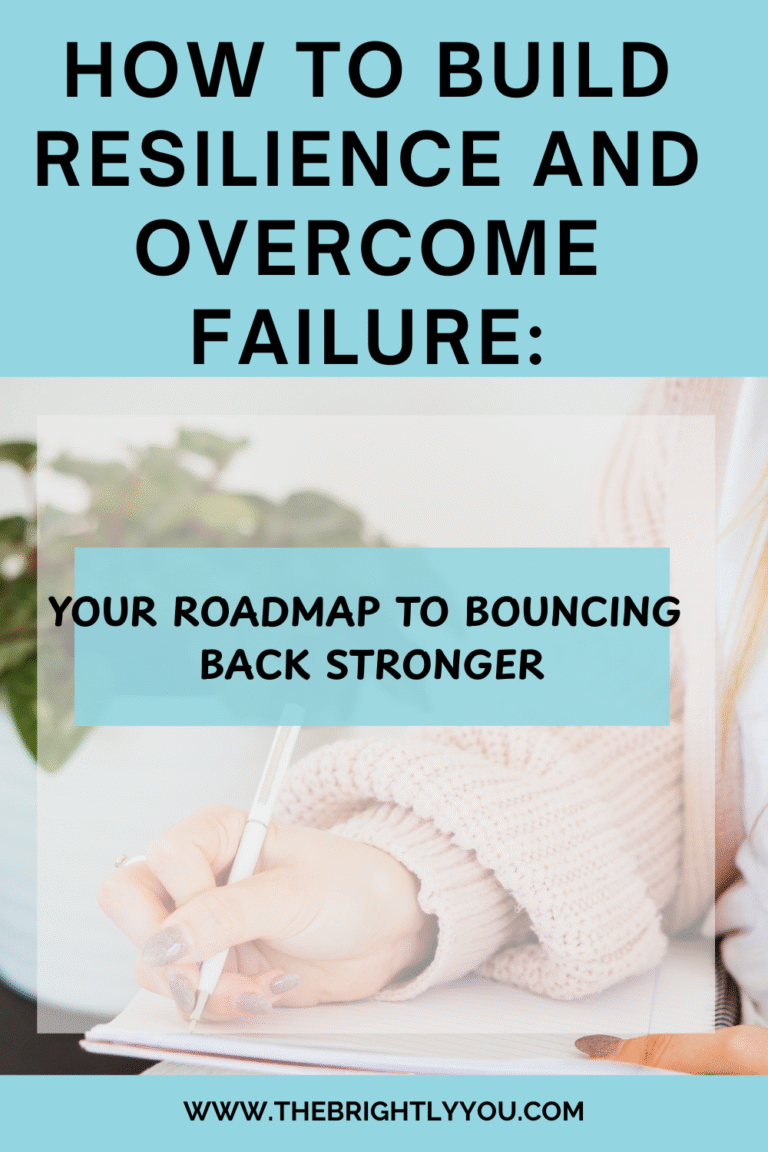
How to Build Resilience and Overcome Failure: Your Roadmap to Bouncing Back Stronger
“Feeling overwhelmed by failure? Here’s a quick fix to bounce back.”
We all stumble. We all fail. But what sets strong, thriving people apart is resilience — the ability to adapt, recover, and come back stronger after setbacks.
In fact, research from the American Psychological Association shows that resilience isn’t a rare trait; it’s a skill you can build over time. So, if you’ve ever felt crushed by a setback or stuck in a cycle of self-doubt, this guide will help you break through and rise again.

What Is Resilience, Really?
Resilience is your mental reservoir of strength. When something goes wrong, instead of falling apart, you tap into this inner reserve to handle stress, find solutions, and keep moving forward.
It’s not about ignoring pain or pretending you’re fine. It’s about facing life’s difficulties with courage and flexibility.
Quick Fact:
Studies have found that resilient people tend to have better mental health, lower stress levels, and even stronger immune systems.
Why Do We Fear Failure?
Humans are wired to avoid pain — and failure feels painful. But failure is not the enemy; it’s the greatest teacher you’ll ever have.
Consider J.K. Rowling. Before Harry Potter became a global phenomenon, she was rejected by 12 publishers and struggling as a single mom. Or think of Michael Jordan, who famously said, “I’ve failed over and over and over again in my life. And that is why I succeed.”
Failure is feedback — and resilience is what helps you learn from it.
Key Traits of Resilient People
Resilient people aren’t superhuman. But they tend to share a few habits:
✅ They accept reality — instead of denying problems, they face them head-on.
✅ They see failures as temporary, not permanent.
✅ They keep perspective — they don’t let one bad moment define their entire story.
✅ They stay connected — they reach out for support when they need it.
✅ They find meaning — they ask, “What can I learn from this?”
5 Practical Ways to Build Resilience
1 Reframe Failure
Shift your language. Instead of saying “I failed,” say “I learned.” Keep a “failure journal” — write down what went wrong and what you’ll do differently next time.
2 Strengthen Your Support System
Don’t isolate yourself. Resilient people have strong connections — family, friends, mentors, or support groups. Research shows that feeling supported reduces the impact of stress.
3 Take Small, Brave Steps
Break big problems into tiny, manageable steps. Action builds confidence. Each small win helps rebuild your belief in yourself.
4 Practice Self-Compassion
Talk to yourself the way you’d comfort a friend. A 2012 study found that self-compassion is strongly linked to resilience — people who forgive themselves bounce back faster.
5 Protect Your Mind & Body
Sleep well, move your body, and rest. Resilience is not just mental; it’s physical too. A healthy routine gives you the stamina to keep going.
Real-Life Example: Thomas Edison
Thomas Edison made 1,000 failed attempts before inventing the light bulb. When asked how it felt to fail so many times, he replied, “I didn’t fail 1,000 times. The light bulb was an invention with 1,000 steps.”
Your Resilience Challenge
Ask yourself:
- What failure are you holding onto right now?
- How can you reframe it as feedback?
- Who can you talk to for support this week?
Conclusion
Failure is never the end — it’s part of the journey. With resilience, every setback can become a stepping stone.
Keep going. Try again. You’re stronger than you think.
If this helped you, you’ll love my step-by-step guide on How to stay mentally strong in an overstimulated world.
Get Brighter, One Email at a Time.
Want more clarity, energy, and feel-good growth in your life?
Join our newsletter and get weekly wellness tips, self-growth prompts, and curated product picks sent straight to your inbox.
